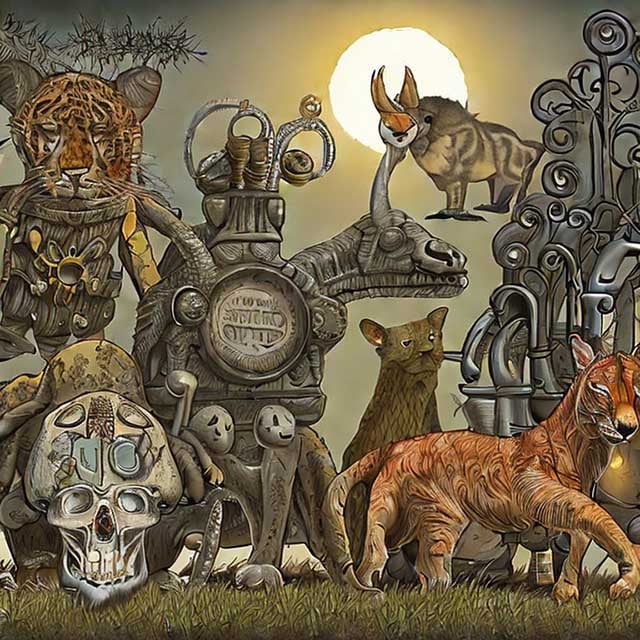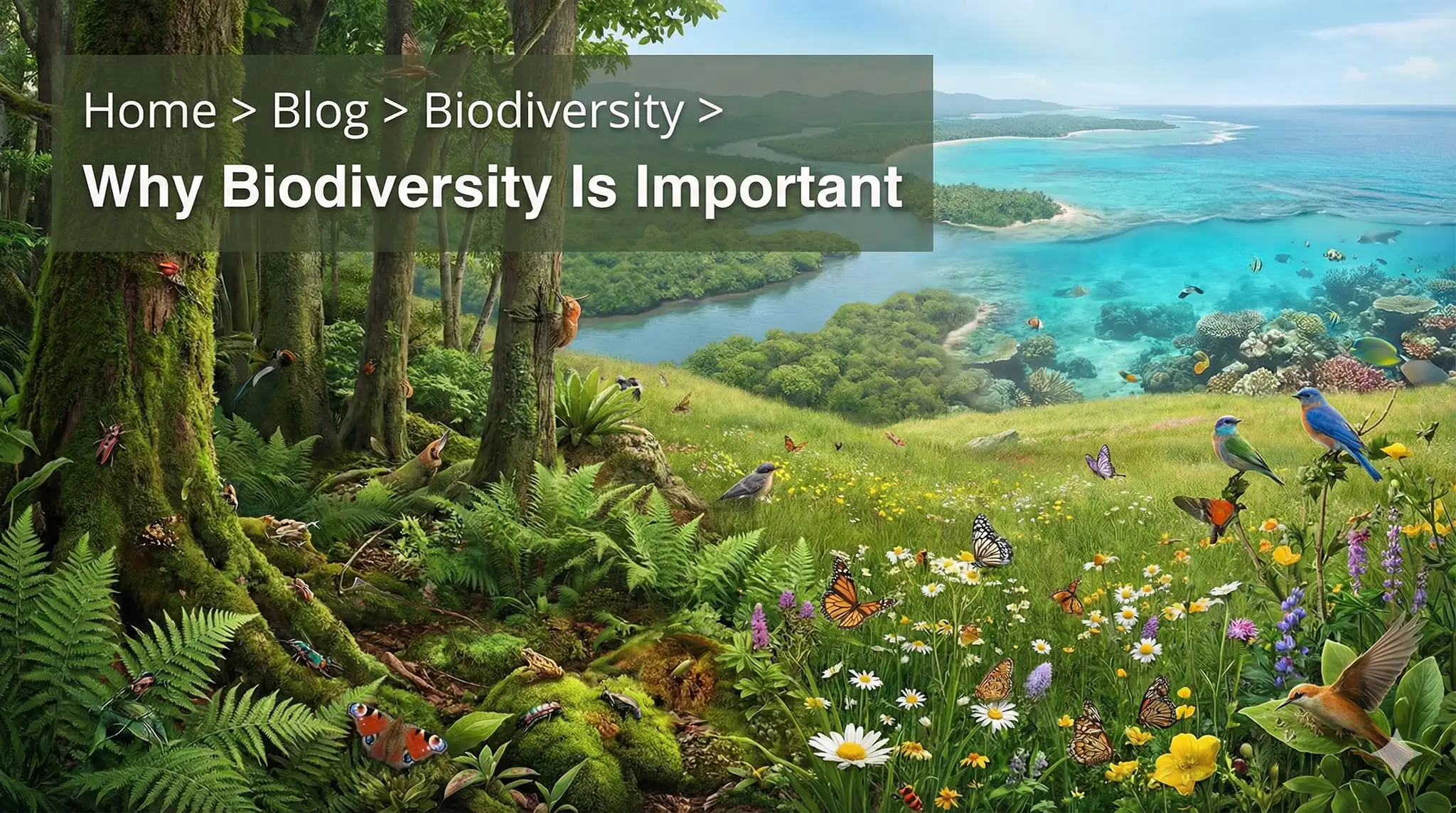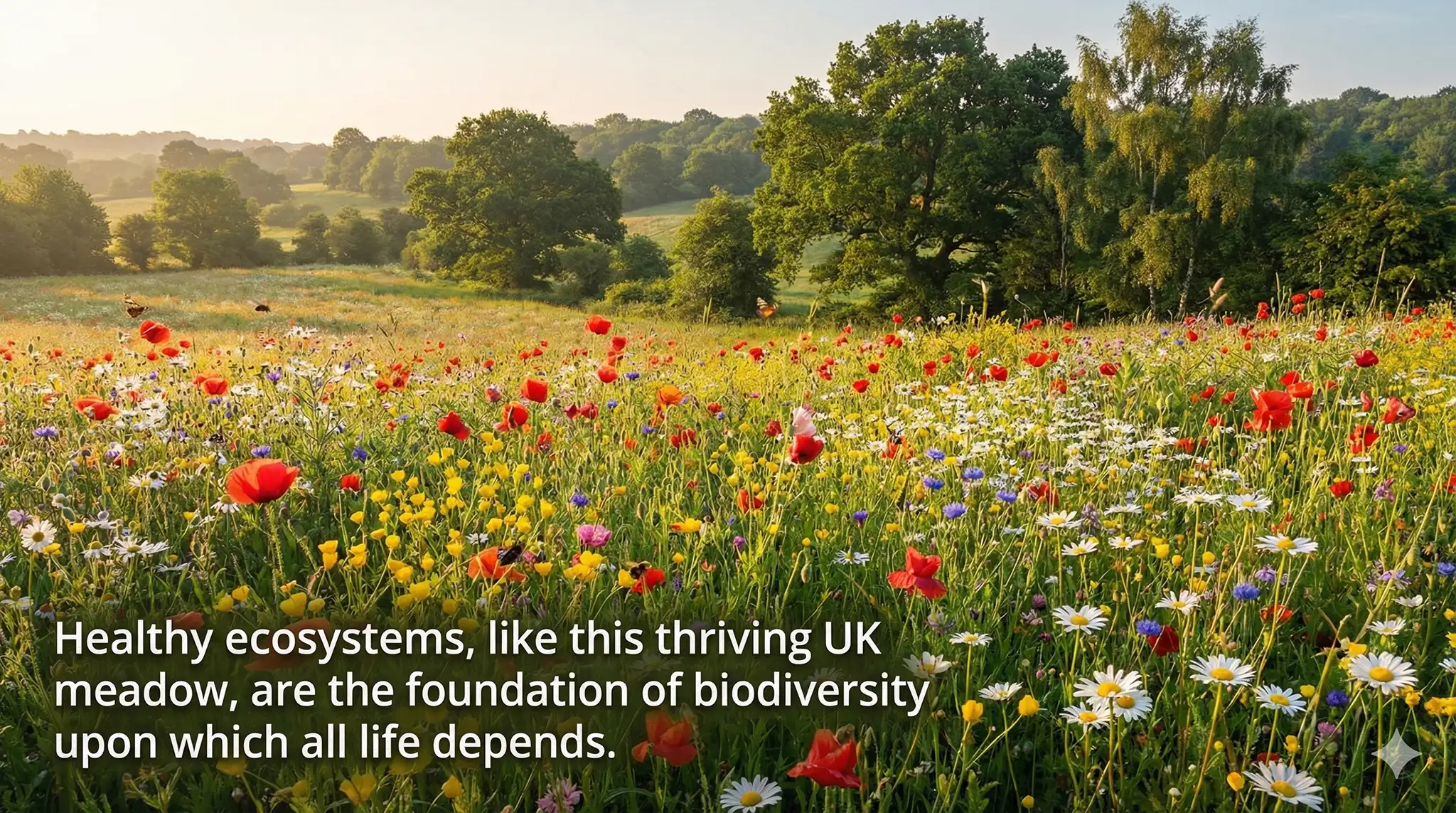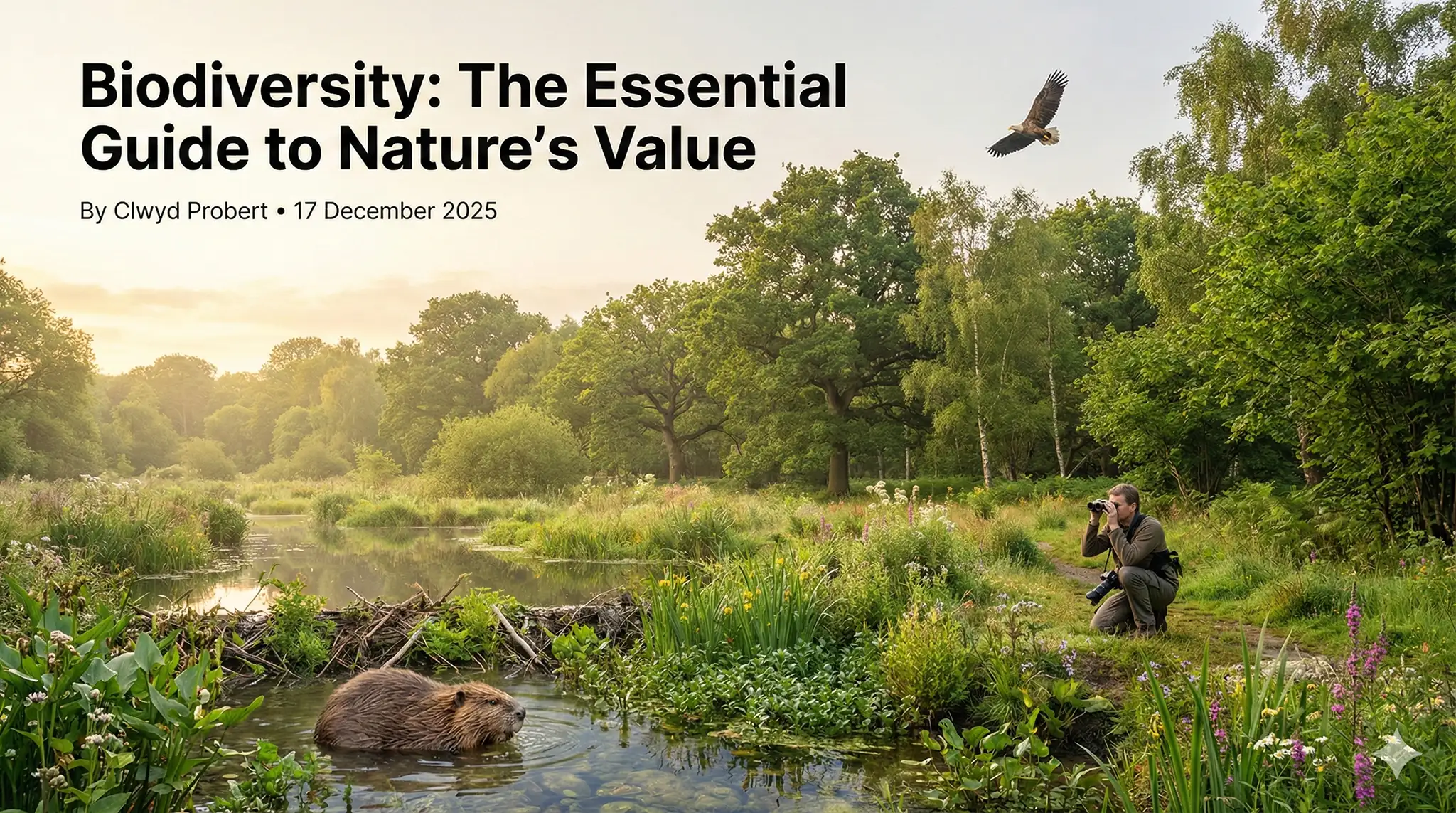An Introduction To Biodiversity Hotspots
- The importance of burial grounds for biodiversity
- The importance of long grass in Welsh burial grounds
- How to properly manage a burial ground to preserve its biodiversity
- The Biodiversity Hotspots Across Wales Project
- How volunteers are helping to preserve burial grounds
What you can do to get involved in the project
In this article, we'll be looking at the biodiversity of burial grounds.
So this is the biodiversity information service and this is the area that we cover in the red outline in mid-wales. We're one of four local environmental record centres or lurks that cover the whole of Wales and we all collect the wildlife records for our region.
Our area and then we make all those available on a website database that's available for people who need to use those wildlife records to make decisions such as for management plans for wildlife trust sites example and also for research and also for planning decisions as well.
We also support a network of wildlife recorders across our area and collaboratively across the whole of Wales and we also encourage new people maybe such as yourselves to get involved in recording the wildlife that you see.
In most parts of mid-Wales we don't have any coastline we're the only local environmental record centre in Wales that doesn't have a coastline so we do like quite a few marine species in our records database.
We are passionate about bringing wildlife to the forefront and making it more accessible to everyone. That's why we encourage people like you to make biological records of the wildlife you observe. These records can then be turned into "dots on the map," allowing us to visualize the distribution of different species in a given area.
For example, let's take a look at the tree bumblebee records in Harrison Beacons National Park. The tree bumblebee is easily recognizable with its orange thorax, black body, and white tail. In the park, you can see over 100 different records of this species, each represented by a dot on the map.
But these records do more than just show us where the tree bumblebees are. They also tell a story. If we look back at the records from 10 years ago, we'll see that there were only a handful of dots in the middle of the park. This tells us the story of how the tree bumblebee species have been moving north and west, likely due to climate change and the increased use of nest boxes for birds in the past decade.
Making wildlife records is easy and accessible, thanks to apps like Look Wales and iRecord. These apps can be downloaded onto your smartphone or used online, and they only require four pieces of information to make a proper record: what you saw, where and when you saw it, and who saw it.
All of the wildlife records in Wales end up on an online database called the Biodiversity Information Service, which anyone can use. One of the most useful tools on the website is the "What's in My Area" tool, which allows you to see a list of all the wildlife species that have been recorded in a given area.
So why not give it a try? Download the app, make some records, and explore the biodiversity in your area. You can also find out more about [Organization] on our website and follow us on social media for updates and to see some of the amazing species that have been spotted and recorded in our area.
Bureau grounds are important hot spots for biodiversity across Wales. They are often old, undisturbed pieces of land that contain a rich diversity of grasses, flowers, and animals. However, they are under threat from development, closure, and mismanagement.
In order to preserve these important sites, it is important to manage them properly. This includes cutting the grass to a variety of different heights, removing grass clippings, and keeping wildflower areas away from compost areas. By doing this, we can ensure that these sites remain important hot spots for biodiversity.
The Importance of Long Grass in Welsh Burial Grounds

Burial grounds in Wales are important not only for their role in providing a final resting place for the dead but also for the role they play in supporting a variety of plant and animal life. One of the most important features of these burial grounds is the long grass that is allowed to grow in some areas.
The long grass is important for a number of reasons.
First, it helps to keep the soil nutrient-rich. When grass is allowed to grow long, it takes in nutrients from the soil and then, when it is cut, those nutrients are returned to the soil. This is important for the health of the plants that grow in the burial ground.
Second, the long grass provides habitat for a variety of animals. Butterflies, amphibians, reptiles, and mammals all benefit from the long grass. These animals are important for the health of the ecosystem as a whole.
Third, the long grass helps to prevent erosion. When the ground is left bare, it is more susceptible to erosion from wind and rain. The long grass helps to hold the soil in place and prevent it from being washed away.
Fourth, the long grass helps to filter pollutants from the air. When plants are allowed to grow tall, they act as a natural filter for the air. They help to remove dust, pollen, and other pollutants from the air, making it healthier for everyone.
Finally, the long grass is simply aesthetically pleasing. It adds beauty and interest to the burial ground, making it a more enjoyable place to visit.
So, next time you visit a Welsh burial ground, take a moment to appreciate the long grass. It is doing important work to support the ecosystem and to make the burial ground a more beautiful place.
The Importance of Burial Grounds for Biodiversity
Burial grounds are important for biodiversity for a variety of reasons. They support many species of lichen, fungi, and grassland plants, which provide food and shelter for a variety of birds, bats, and other animals. Burial grounds also provide roosting sites for bats and nesting sites for birds.
The Biodiversity Hotspots Across Wales Project is working with groups managing burial grounds across Wales to help preserve and enhance their flower-rich grassland and engage the wider community. The project includes webinars, meetups, virtual visits, online forums, and grassland surveys.
Regular recording of the wildlife in burial grounds is important to help establish the distribution and size of populations and to detect changes over time. Records can also be used to help protect species and habitats from harm.
Burial grounds are important places for biodiversity. Over 4,750 volunteers have taken part in a project to record the biodiversity in burial grounds, and over 50,000 records have been submitted. This week is Novel Burial Ground Week, and over 450 groups are running sessions to record the biodiversity in their local burial grounds.
The records will be added to a database that everyone can access. If you would like to get involved in recording, there are some resources that may help, including a starter guide and a botanical companion. These publications can help you identify wildlife in burial grounds.
You can also sign up for a newsletter to keep updated on burial ground news and listen to the Beautiful Burial Ground podcast. There are also resources available in Welsh and English, including an action pack for managers, an education pack for primary schools, and resources to help with recording.
Let us know what species you find in a burial ground near you, and if you have a well-managed site that you feel could be added to the map of recommended sites.
FAQ
Q: What are burial grounds?
A: Burial grounds are important hot spots for biodiversity across Wales. They are often old, undisturbed pieces of land that contain a rich diversity of grasses, flowers, and animals.
Q: What is the importance of burial grounds?
A: Burial grounds are important for biodiversity because they are often old, undisturbed pieces of land that contain a rich diversity of grasses, flowers, and animals.
Q: What are the threats to burial grounds?
A: The main threats to burial grounds are development, closure, and mismanagement.
Q: How can we preserve burial grounds?
A: In order to preserve burial grounds, it is important to manage them properly. This includes cutting the grass to a suitable height, removing invasive species, and maintaining the graves.
Q: What are the benefits of long grass in Welsh burial grounds?
A: The long grass is important for a number of reasons. First, it helps to keep the soil nutrient-rich. When grass is allowed to grow long, it takes in nutrients from the soil and then, when it is cut, those nutrients are returned to the soil. This is important for the health of the plants that grow in the burial ground. Second, the long grass provides a habitat for a variety of animals.
Butterflies, amphibians, reptiles, and mammals all benefit from the long grass. These animals are important for the health of the ecosystem as a whole. Third, the long grass helps to prevent erosion. When the ground is left bare, it is more susceptible to erosion from wind and rain. The long grass helps to hold the soil in place and prevent it from being washed away. Fourth, the long grass helps to filter pollutants from the air. When plants are allowed to grow tall, they act as a natural filter for the air. They help to remove dust, pollen, and other pollutants from the air, making it healthier for everyone. Finally, the long grass is simply aesthetically pleasing. It adds beauty and interest to the burial ground, making it a more enjoyable place to visit.
Q: Why are burial grounds important for biodiversity?
A: Burial grounds are important for biodiversity for a variety of reasons. They support many species of lichen, fungi, and grassland plants, which provide food and shelter for a variety of birds, bats, and other animals. Burial grounds also provide roosting sites for bats and nesting sites for birds.
CONCLUSION
Burial grounds are important hot spots for biodiversity across Wales. They are often old, undisturbed pieces of land that contain a rich diversity of grasses, flowers, and animals. However, they are under threat from development, closure, and mismanagement. In order to preserve these important sites, it is important to manage them properly. This includes cutting the grass to a variety of different heights, removing grass clippings, and keeping wildflower areas away from compost areas. By doing this, we can ensure that these sites remain important hot spots for biodiversity.
Burial grounds are important for biodiversity for a variety of reasons. They support many species of lichen, fungi, and grassland plants, which provide food and shelter for a variety of birds, bats, and other animals. Burial grounds also provide roosting sites for bats and nesting sites for birds. The Biodiversity Hotspots Across Wales Project is working with groups managing burial grounds across Wales to help preserve and enhance their flower-rich grassland and engage the wider community. The project includes webinars, meetups, virtual visits, online forums, and grassland surveys. Regular recording of the wildlife in burial grounds is important to help establish the distribution and size of populations and to detect changes over time. Records can also be used to help protect species and habitats from harm.



